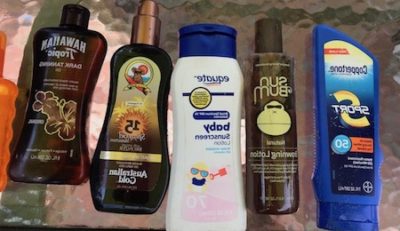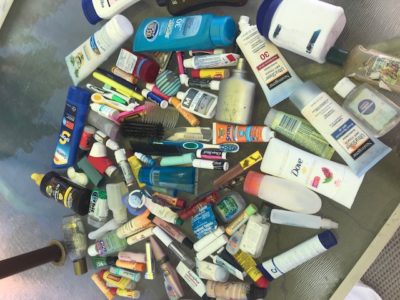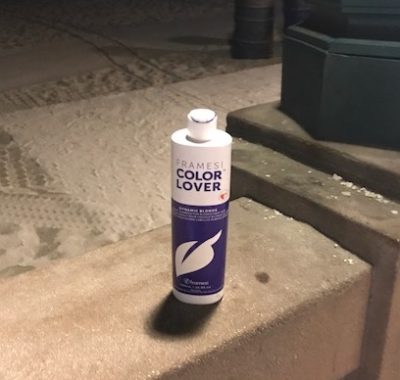One of the items I have never bought over the last 5 or 6 years is sunscreen…. guess why? Found on the beach of course. Lotions, and sprays are the top finds. I always wondered Does Sunscreen Really Get Old? It seems that it does, but it can last for 3 years according to the FDA.
‘The FDA requires all sunscreens to be marked with an expiration date, unless the product has been proven to last at least three years. So unless your sunscreen bottle is stamped with a specific expiration date, you can assume it’s good for three years past its purchase date, the FDA says.’ (Time Magazine)

The good news, is that there are many places that will take unused Sunscreen, I can donate, the 50+ unused sunscreens I pick up every year. The bad news is that Sunscreen is encased in plastic and the sunscreen market is forecasted to grow to $24.9 Billion USD by 2024. That means even more plastic landing up in landfills and the ocean.

The problem with Sunscreen is that is washes off your body when swimming or showering. The main ingredient that causes harm from popularized sunscreen is known as oxybenzone. Oxybenzone is used within sunscreen to absorb and block any harmful UV rays from reaching your skin. However, the ingredient has also been proven to attack the DNA of coral reefs. According to The Ocean Foundation,
“An estimated 14,000 tons of sunscreen is believed to be deposited in oceans annually with the greatest damage found in popular reef areas such as Hawaii and the Caribbean.”
In fact, the chemicals oxybenzone and octinoxate have caused enough reef damage in Hawaii to merit legal action. In 2018, Hawaii passed a bill banning the usage and production of sunscreens that contain both oxybenzone and octinoxate. While this ban will not take effect until January 2021, the passing of the bill alone should be enough to leave you wanting to look for more environmentally safe options.
Are There Environmentally-Friendly Alternatives?
The short answer is, yes! Be mindful of all of your options, as there are more than you would think. There are many different reef-safe sunscreen options to try that will protect both you and aquatic life. Another more hands-on route is to make your own environmentally-friendly sunscreen. Making this can be a fun summer activity before you go out to brave the sun! Lastly, a simple alternative to using harmful sunscreen is to cover up more. While this might seem hard during the warmer days, there are many different lightweight, breathable clothing options that will do the trick! Beyond clothing, you can also use a sun umbrella to get extra shade from harmful rays. Whatever choice you make when it comes to sun protection, identify what works best for you.
It is not just sunscreen, many other beauty products are also found on the beach. Shampoos, lotions and more. Other products that contain oxybenzone, for example, include certain types of lipstick, nail polish, and lotion. The best way to make a difference when it comes to the products you use is to build awareness through your actions. Read the labels of the items you purchase, it’s that simple. Even if you aren’t going anywhere warm in the near future, a great way to make even more of an impact is to be mindful of products you purchase that are cruelty-free and vegan. There are many cruelty-free moisturizers to choose from that are easy to incorporate into your morning routine! 
Even finding the right hair color can be made eco-friendly if you know the right brands to look for. The usage of such products can lessen your carbon footprint in the long run and help keep animals safe as well. Whatever products you do decide to purchase, make awareness your number one priority and empower yourself with information. You’d be surprised how many products you use cause more harm than help, so keep track of them!
No matter what you do, Don’t leave them behind, like this person did.

Resources
- 4 in 10 Top Selling Sunscreens on Amazon Did Not Meet Dermatologist Standards ; Of these 65 sunscreens, seven (or 11%) did not have an SPF of at least 30, five (or 8%) did not protect against both UVA and UVB rays, and 25 (or 38%) were not designed to withstand water or sweat.
- 2015 the consumer advocacy group Choice tested six SPF 50+ sunscreens and found four failed to meet the stated sun protection factor claims on pack, including two Banana Boat products. (The Guardian)
- Consumer Reports 2018 Sunscreen Guide (Many of these did not meet the Environmental Working Group list) also many many contain coral killing ingredients.
- EPA on Sunscreens
- Best Reef Safe Sunscreens
- The Environmental Working Group just launched their 2018 Guide to Sunscreens here
